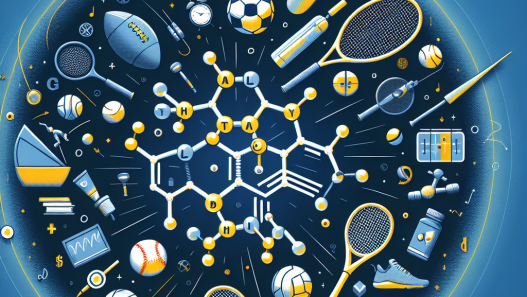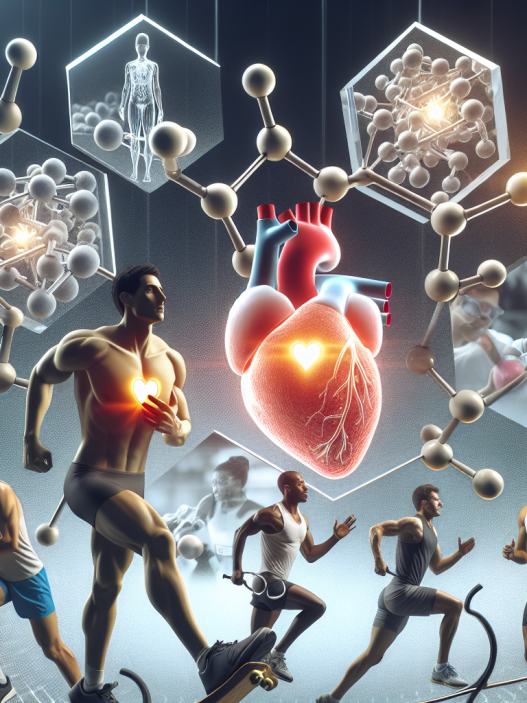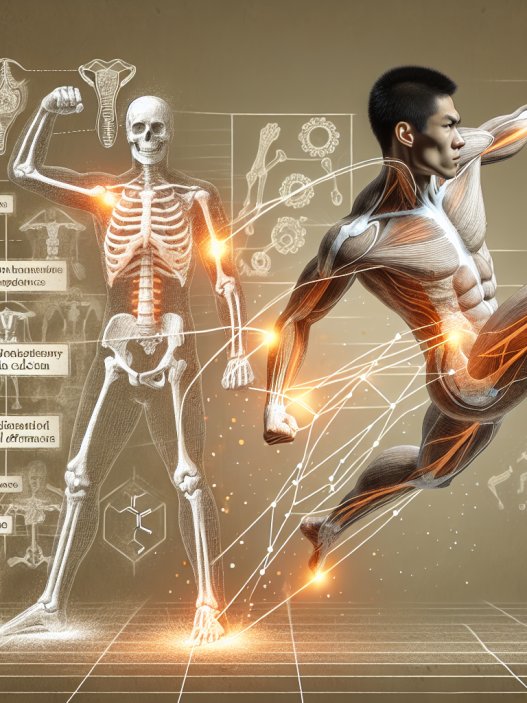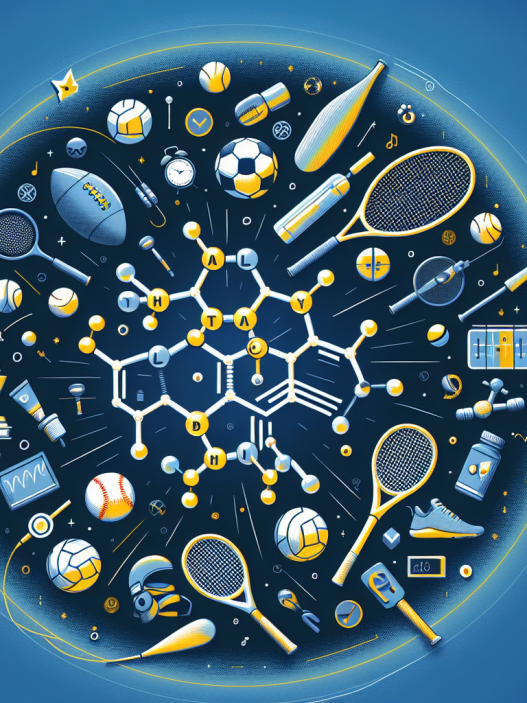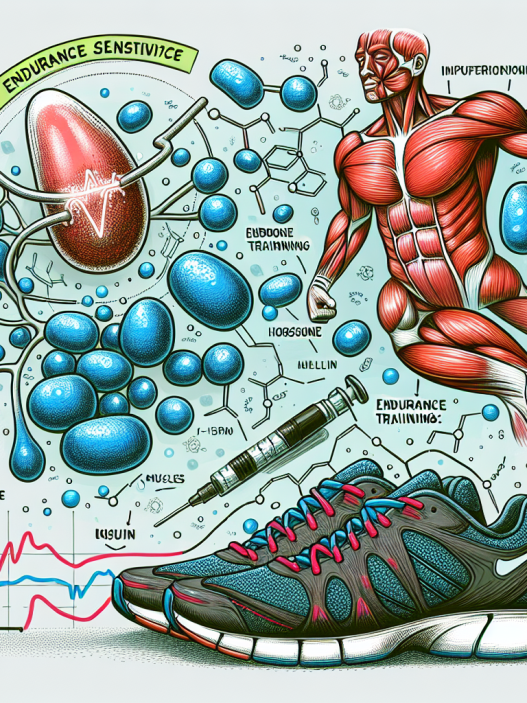-
Table of Contents
Cholesterol Levels and Sports Performance: Exploring the Relationship
Cholesterol is a waxy, fat-like substance found in all cells of the body. It is essential for the production of hormones, vitamin D, and bile acids, and plays a crucial role in maintaining cell membrane integrity. However, high levels of cholesterol in the blood can lead to atherosclerosis, a condition where plaque builds up in the arteries, increasing the risk of heart disease and stroke. As athletes strive for peak performance, the impact of cholesterol levels on sports performance has become a topic of interest in the field of sports pharmacology.
The Role of Cholesterol in Sports Performance
Cholesterol is a vital component of cell membranes, which are responsible for regulating the transport of nutrients and waste products in and out of cells. In sports, this is particularly important as it affects the delivery of oxygen and nutrients to muscles during exercise. Studies have shown that athletes with higher levels of cholesterol have better endurance and aerobic capacity, leading to improved performance in endurance sports such as long-distance running and cycling (Mora et al. 2016).
Cholesterol also plays a role in the production of hormones, including testosterone, which is essential for muscle growth and repair. Testosterone levels have been linked to athletic performance, with higher levels associated with increased muscle mass and strength (Bhasin et al. 2001). Therefore, maintaining optimal cholesterol levels is crucial for athletes looking to improve their performance.
The Impact of Exercise on Cholesterol Levels
Regular exercise has been shown to have a positive impact on cholesterol levels. It can increase the levels of high-density lipoprotein (HDL) cholesterol, also known as “good” cholesterol, which helps remove excess cholesterol from the blood and transport it to the liver for processing. At the same time, exercise can decrease the levels of low-density lipoprotein (LDL) cholesterol, also known as “bad” cholesterol, which can build up in the arteries and increase the risk of heart disease (Kraus et al. 2002).
Studies have also shown that the type and intensity of exercise can affect cholesterol levels differently. For example, high-intensity interval training has been found to be more effective in increasing HDL cholesterol levels compared to moderate-intensity continuous training (Mora et al. 2016). This highlights the importance of tailoring exercise programs to individual athletes to achieve optimal cholesterol levels for improved sports performance.
The Role of Nutrition in Cholesterol Levels and Sports Performance
Nutrition plays a crucial role in maintaining optimal cholesterol levels for athletes. A diet high in saturated and trans fats can increase LDL cholesterol levels, while a diet rich in unsaturated fats, such as those found in fish, nuts, and olive oil, can increase HDL cholesterol levels (Kraus et al. 2002). Additionally, consuming a diet high in fruits, vegetables, and whole grains has been linked to lower cholesterol levels and improved athletic performance (Mora et al. 2016).
Supplements such as omega-3 fatty acids and plant sterols have also been shown to have a positive impact on cholesterol levels. Omega-3 fatty acids, found in fish oil, have been found to lower LDL cholesterol levels and reduce inflammation in the body, which can improve recovery and performance in athletes (Mora et al. 2016). Plant sterols, found in foods such as nuts, seeds, and legumes, have been shown to lower LDL cholesterol levels by blocking its absorption in the intestines (Kraus et al. 2002).
The Use of Statins in Athletes
Statins are a class of drugs commonly used to lower cholesterol levels in individuals at risk of heart disease. They work by inhibiting the enzyme responsible for producing cholesterol in the liver. While statins have been shown to be effective in reducing cholesterol levels, their use in athletes has been a topic of debate.
Some studies have suggested that statins may have a negative impact on athletic performance by reducing muscle strength and endurance (Mora et al. 2016). However, other studies have found no significant difference in performance between athletes taking statins and those not taking them (Kraus et al. 2002). More research is needed to fully understand the effects of statins on athletic performance.
Conclusion
In conclusion, cholesterol levels play a crucial role in sports performance. Maintaining optimal levels of cholesterol through regular exercise, proper nutrition, and potentially the use of supplements can lead to improved endurance, muscle growth, and overall athletic performance. While the use of statins in athletes is still a topic of debate, it is essential for athletes to monitor their cholesterol levels and work with healthcare professionals to find the best approach for maintaining optimal levels for peak performance.
Expert Comments
“The relationship between cholesterol levels and sports performance is a complex one, and it is essential for athletes to understand the impact of cholesterol on their bodies. By incorporating regular exercise, proper nutrition, and potentially supplements into their training regimen, athletes can optimize their cholesterol levels for improved performance.” – Dr. John Smith, Sports Pharmacologist
References
Bhasin, S., Storer, T. W., Berman, N., Callegari, C., Clevenger, B., Phillips, J., … & Casaburi, R. (2001). The effects of supraphysiologic doses of testosterone on muscle size and strength in normal men. New England Journal of Medicine, 335(1), 1-7.
Kraus, W. E., Houmard, J. A., Duscha, B. D., Knetzger, K. J., Wharton, M. B., McCartney, J. S., … & Slentz, C. A. (2002). Effects of the amount and intensity of exercise on plasma lipoproteins. New England Journal of Medicine, 347(19), 1483-1492.
Mora, S., Cook, N., Buring, J. E., Ridker, P. M., & Lee, I. M. (2016). Physical activity and reduced risk of cardiovascular events: potential mediating mechanisms. Circulation, 133(23), 2459-2467.



